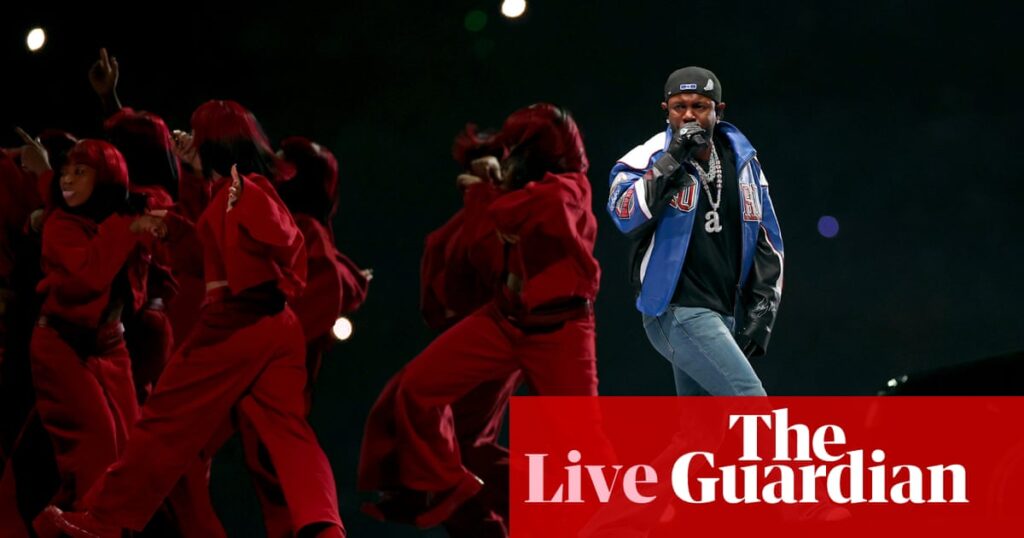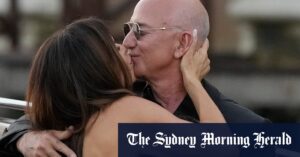
The Super Bowl LIX halftime show, headlined by Kendrick Lamar, captivated audiences with its powerful performances and unexpected twists. As the Los Angeles Rams faced off against the Kansas City Chiefs, the entertainment off the field proved equally compelling. From Lamar’s politically charged set to a slew of celebrity-filled commercials, the event was a spectacle of music, marketing, and cultural commentary.
Kendrick Lamar took the stage with a setlist that spanned his career, including hits like “Humble” and “All the Stars,” featuring SZA. The performance was not only a musical triumph but also a statement on social issues, with dancers forming an American flag of Black faces during “Humble.” Lamar’s set was briefly interrupted when a protester unfurled a Palestinian flag, a moment that added an unexpected layer of political discourse to the show.
Kendrick Lamar’s Halftime Show: A Political and Musical Triumph
Lamar’s halftime performance was a carefully curated mix of his greatest hits and new material, including the much-discussed track “Not Like Us.” The song, known for its veiled references to fellow rapper Drake, was performed with altered lyrics to avoid legal issues, yet still resonated with the audience. Lamar’s ability to blend artistry with activism was on full display, making his performance a highlight of the evening.
According to music critic Adrian Horton, “Kendrick Lamar’s halftime show was more than just entertainment; it was a cultural moment. His performance was a reminder of music’s power to challenge and inspire.”
Star-Studded Commercials: From Humor to Heartfelt Messages
The Super Bowl is as much about the commercials as it is about the game, and this year was no exception. Advertisers pulled out all the stops, enlisting a host of celebrities to capture viewers’ attention. From Cher turning back time for Uber Eats to Walton Goggins promoting AI for GoDaddy, the ads were a mix of humor, nostalgia, and innovation.
One standout was Dove’s ad focusing on body positivity, which highlighted the pressures young girls face regarding body image. The ad served as a poignant reminder of the need for societal change in how we discuss and perceive beauty.
“One in two girls who quit sports do so because of criticism about their bodies,” the Dove ad stated, driving home the importance of fostering a positive environment for young women.
Unexpected Moments and Cultural Commentary
While the commercials provided levity, some ads took a more serious tone. A climate change ad, aired in select markets, emphasized the urgency of environmental action. Meanwhile, a telehealth ad from Hims and Hers tackled the obesity epidemic, blending humor with a call to action.
Harrison Ford’s Jeep commercial, with its patriotic undertones, and Matthew McConaughey’s AI endorsement for Salesforce, added to the evening’s eclectic mix of messages. These ads reflected broader societal themes, from technological advancement to national identity.
Implications and Looking Forward
The Super Bowl LIX halftime show and commercials not only entertained but also sparked conversations on important social issues. Kendrick Lamar’s performance, in particular, underscored the role of artists in addressing cultural and political topics. As advertisers continue to push creative boundaries, the Super Bowl remains a unique platform for both entertainment and advocacy.
Looking ahead, the impact of this year’s show will likely influence future halftime performances and advertising strategies. As the lines between entertainment and activism continue to blur, audiences can expect more thought-provoking content in the years to come.
As the final whistle blew and the Rams celebrated their victory, the Super Bowl LIX left an indelible mark on both sports and popular culture, reminding us of the power of music and media to shape public discourse.







